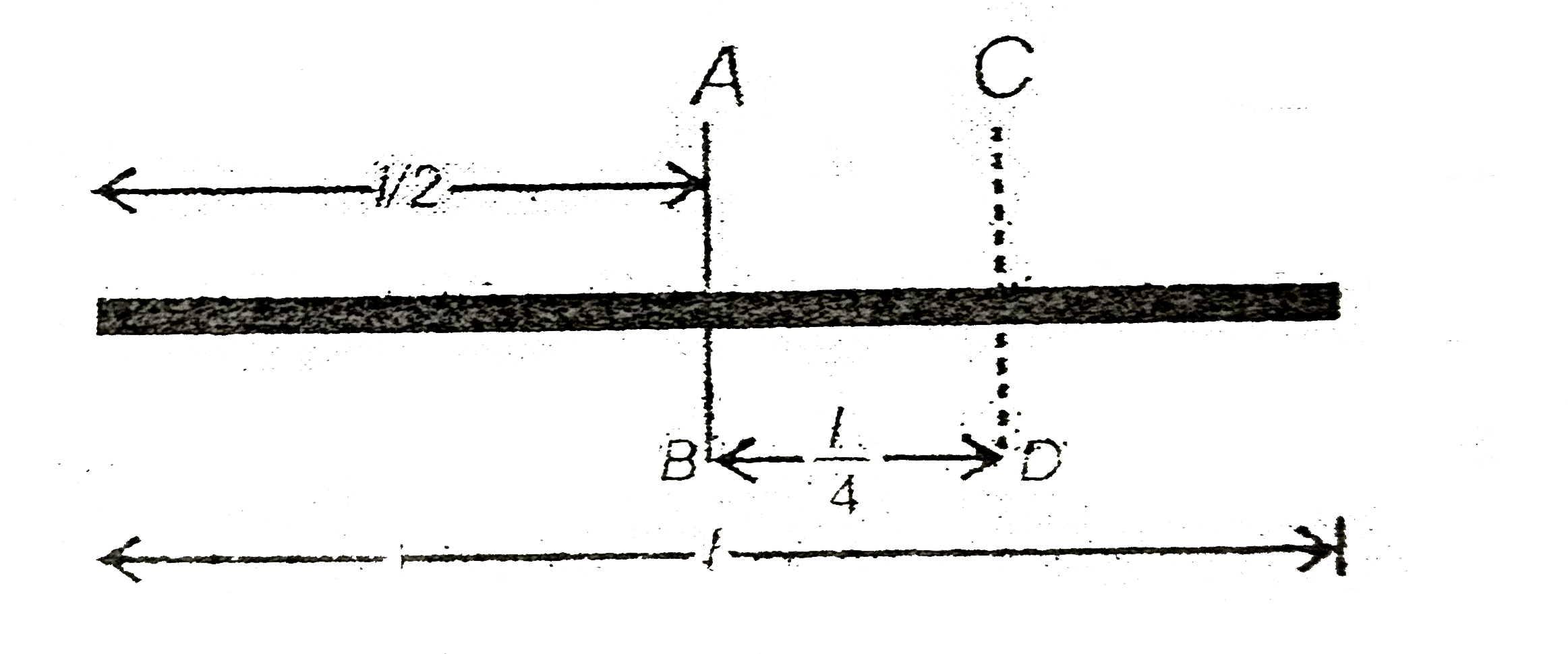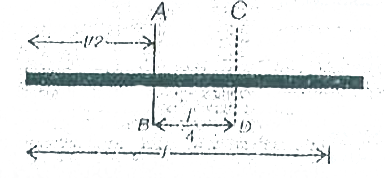The moment of inertia of a rod about its perpendicular bisector is l, when temperature of rod is increased by ΔT, the increase in the moment of inertia of the rod about same axis (γ = temperature coefficient of volume expansion)
((5γ)/3)[ΔT]
[γ/(ΔT)]/2
γΔT
((2γ)/3)[ΔT]
To solve the problem of finding the increase in the moment of inertia of a rod about its perpendicular bisector when the temperature is increased by ΔT, we can follow these steps:
1. Understanding the Moment of Inertia:
The moment of inertia (I) of a rod about its perpendicular bisector is given by the formula:
I=112ML2
where M is the mass of the rod and L is its length.
2. Effect of Temperature on Length:
When the temperature of the rod increases by ΔT, the length of the rod will change due to thermal expansion. The new length L′ can be expressed as:
L′=L(1+αΔT)
where α is the coefficient of linear expansion.
3. Relating Linear Expansion to Volume Expansion:
The coefficient of volume expansion γ is related to the coefficient of linear expansion α by the relation:
γ=3α
Therefore, we can express α in terms of γ:
α=γ3
4. Calculating the New Moment of Inertia:
Substitute L′ into the moment of inertia formula:
I′=112M(L′)2=112M(L(1+αΔT))2
Expanding this:
I′=112ML2(1+αΔT)2=112ML2(1+2αΔT+(αΔT)2)
For small changes, we can ignore the term (αΔT)2:
I′≈I(1+2αΔT)
5. Finding the Change in Moment of Inertia:
The change in moment of inertia ΔI can be expressed as:
ΔI=I′−I=I(1+2αΔT)−I=I⋅2αΔT
6. Substituting α:
Now, substituting α=γ3:
ΔI=I⋅2(γ3)ΔT=2Iγ3ΔT
Final Result:
The increase in the moment of inertia of the rod about the same axis when the temperature is increased by ΔT is:
ΔI=2Iγ3ΔT
The moment of inertia (I) of a rod about its perpendicular bisector is given by the formula:
I=112ML2
where M is the mass of the rod and L is its length.
When the temperature of the rod increases by ΔT, the length of the rod will change due to thermal expansion. The new length L′ can be expressed as:
L′=L(1+αΔT)
where α is the coefficient of linear expansion.
The coefficient of volume expansion γ is related to the coefficient of linear expansion α by the relation:
γ=3α
Therefore, we can express α in terms of γ:
α=γ3
Substitute L′ into the moment of inertia formula:
I′=112M(L′)2=112M(L(1+αΔT))2
Expanding this:
I′=112ML2(1+αΔT)2=112ML2(1+2αΔT+(αΔT)2)
For small changes, we can ignore the term (αΔT)2:
I′≈I(1+2αΔT)
The change in moment of inertia ΔI can be expressed as:
ΔI=I′−I=I(1+2αΔT)−I=I⋅2αΔT
Now, substituting α=γ3:
ΔI=I⋅2(γ3)ΔT=2Iγ3ΔT
The increase in the moment of inertia of the rod about the same axis when the temperature is increased by ΔT is:
ΔI=2Iγ3ΔT
Topper's Solved these Questions
Similar Questions
Knowledge Check
The moment of inertia of a rod about its perpendicular bisector is I . When the temperature of the rod is increased by ΔT , the increase in the moment of inertia of the rod about the same axis is (Here , α is the coefficient of linear expansion of the rod )
AαIΔTB2αIΔTCαIΔT2D2IΔTαThe moment of ineratia of a uniform thin rod about its perpendicular bisector is I. If the temperature of the rod is increased by Δt , the moment of inertia about perpendicular bisector increases by (coefficient of linear expansion of material of the rod is α).
AZeroBIαΔtC2IαΔtDIαΔtIf temperature increases, the moment of inertia of a solid sphere about its diameter
AincreasesBdecreasesCremains unchangedDbecomes negative
If the temperature of a uniform rod is slightly increased by Δt, its moment of inertia I about a line parallel to itself will increased by
View SolutionThe moment of inertia of a thin uniform rod of mass M and length l about an axis perpendicular to the rod through its centre is I. The moment of inertia of the rod through its end point is
View SolutionIf l1 is the moment of inertia of a thin rod about an axis perpendicular to its length and passing through its centre of mass and l2 is the moment of inertia (about central axis) of the ring formed by bending the rod, then the ratio of I1 to I2 is
View SolutionMoment of inertia of a rod of mass 'M', length ? about an axis perpendicular to it through one end is,
View SolutionThe moment of inertia of a uniform cylinder of length landradiusR about its perpendicular bisector is I. What is the ratio l/R such that the moment of inertia is minimum ?
View Solution


